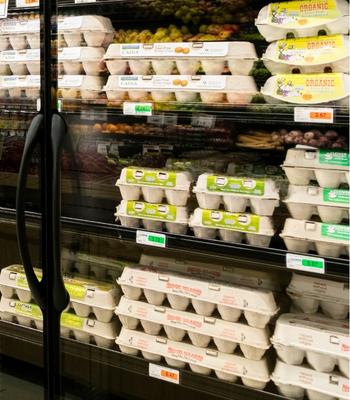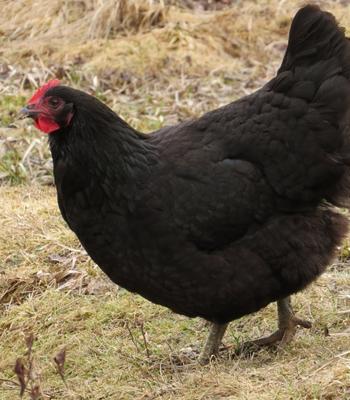
Category: Cooperative Extension

Eggs or Meat…Does the same chicken produce both?
March 28, 2023 Written by Georgie Cartanza, Statewide Poultry Agent
The simple answer is: Yes! A chicken can produce both meat and eggs. But there is more to it... The breed of chicken really determines how many eggs or meat can be produced.
Lately, there has been increasing interest in being able to grow chickens for eggs. Much of this has been driven by egg prices, availability, and the desire to be self-sufficient in producing one’s own food. In the past three years, consumers have experienced shortages of poultry meat and eggs for two primary reasons. Covid 19 created supply chain issues for poultry meat availability. The challenge was the way poultry meat was packed and distributed. When restaurants and schools shut down in mid-March 2020, it changed where poultry meat was going. Roughly 50% of poultry meat went to restaurants and institutions packaged in 40- and 50-pound boxes. The other 50% went to grocery stores packaged in 1-to-5-pound packages. This created a logistical challenge because the processing plants were not set up to package 100% of the production on a smaller scale. There were also challenges with staffing the processing plants.

Currently, consumers are experiencing higher egg prices. This is due primarily to the Highly Pathogenic Avian Influenza (HPAI) outbreak. Flocks confirmed with HPAI are depopulated to reduce the spread of the virus. Once the flock has been disposed of, then the farm is cleaned and disinfected. This process can take up to 3 months. Female chickens will typically start to lay eggs between 16 to 20 weeks of age, depending on breed, nutrition, and light.
This creates a gap in the supply chain for eggs. It takes approximately seven months to fill that gap. It is estimated that there are 391 million laying hens in the US. In 2022, 43 million layers were depopulated for HPAI. Input costs for feed, energy, labor, and repairs have also contributed to the increase in the prices of both poultry meat and eggs.
Egg-laying breeds tend to be thinner in stature as the nutrients they are consuming are used primarily for the maintenance of body weight and egg production. Once a female chicken has reached sexual maturity, she is called a hen. Hens will lay eggs whether a male chicken (rooster) is present or not. Popular egg-laying breeds include White Leghorn and Ameraucana. These breeds can lay 250 to 300 eggs per year. Around 18 months of age, the hen will go through a molt. During molting, the hens will shed any damaged or loose feathers, and egg production will stop. The molting process lasts 8 to 12 weeks. After molting, the hen will lay eggs again. The meat of a laying chicken can be consumed; however, it may be tuff, and there will not be as much meat as a traditional meat-type bird.

Meat-producing breeds tend to be larger and stockier as their primary goal is meat production. Some breeds are fast-growing, while others are slower-growing. Popular meat breeds include the Cornish Cross, Jersey Giant, and New Hampshire. The length of time to grow the birds to the desired weight can vary depending on their diet. The Cornish Cross can reach 8 to 12 pounds in 6 to 8 weeks. The Jersey Giant can reach 10 to 12 pounds in 16 to 20 weeks. The Delmarva Peninsula produces approximately 6.7% of US broilers. Most often, the commercial breeds of birds used are Ross or Cobb. These breeds can reach 6 to 9 pounds in 6 to 9 weeks. These birds grow efficiently using less feed and water than some of the other breeds. The only other animal more efficient than a chicken in taking in feed and turning it into body weight is a fish. All commercially raised chickens are never given any hormones or steroids and are all antibiotic-free at the time of processing.
Dual breeds provide both egg production and meat production. Keep in mind that the roosters don’t lay eggs, so their purpose is to the meat or to fertilize eggs to get chicks. Dual-purpose breeds include Rhode Island Red and Speckled Sussex.
Breed selection is just one of the many factors that should be taken into consideration when deciding to grow poultry. Investigate the requirements associated with housing poultry with your homeowner's association, city or county. Consider how much space will be needed, where the feed will come from and be stored, how to protect the birds from predators and diseases, and how will manure and litter is managed. These are just a few of the questions one should ask themselves prior to committing to growing chickens.
